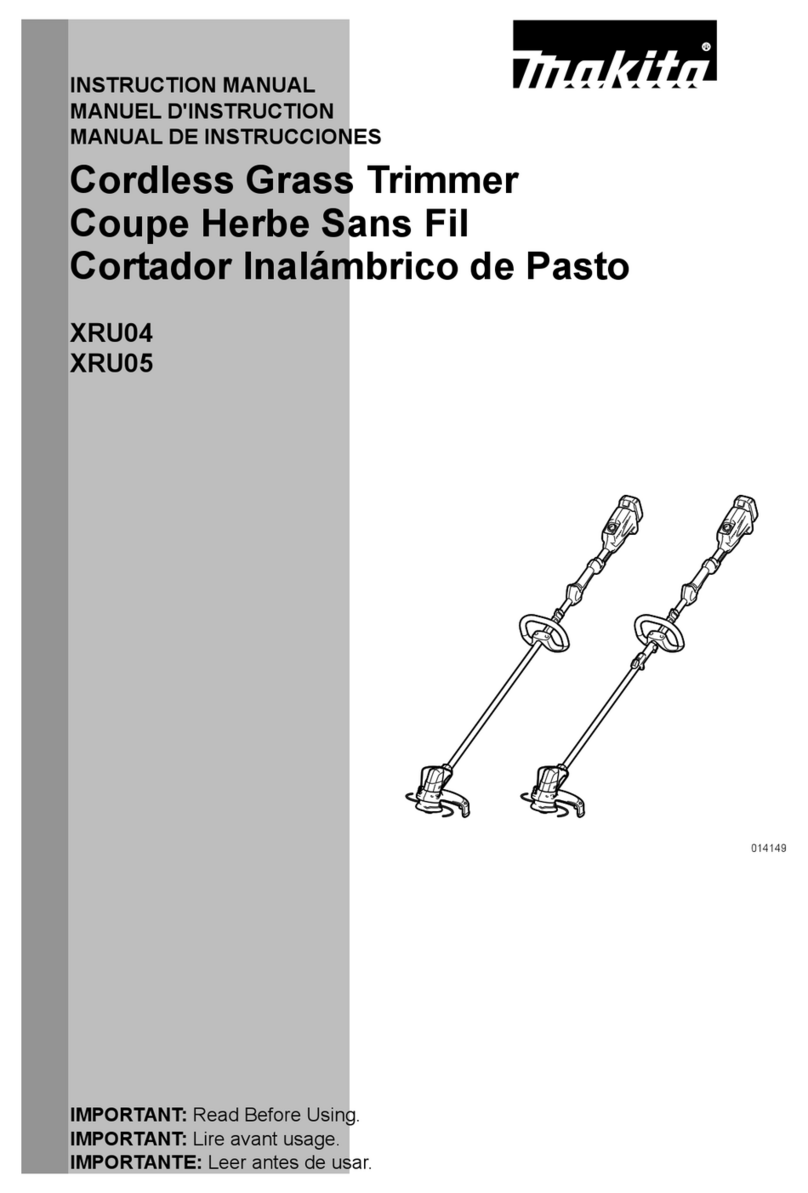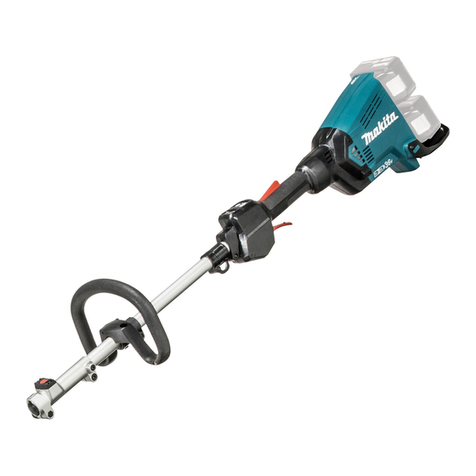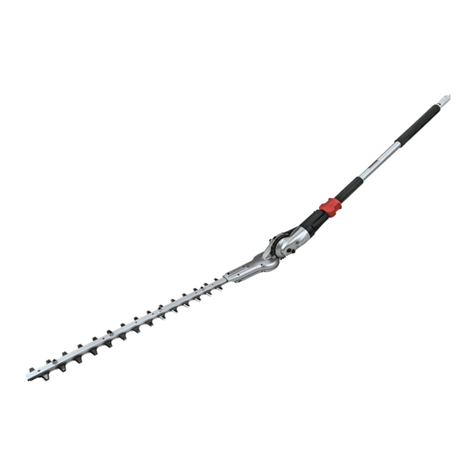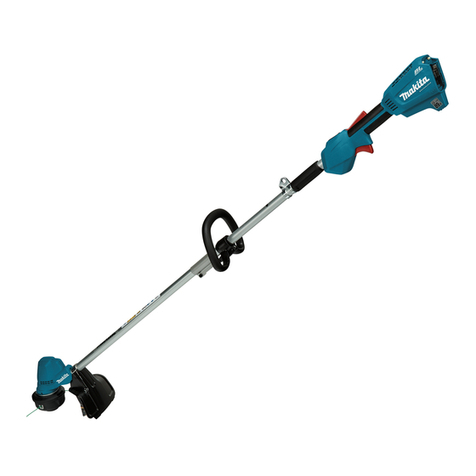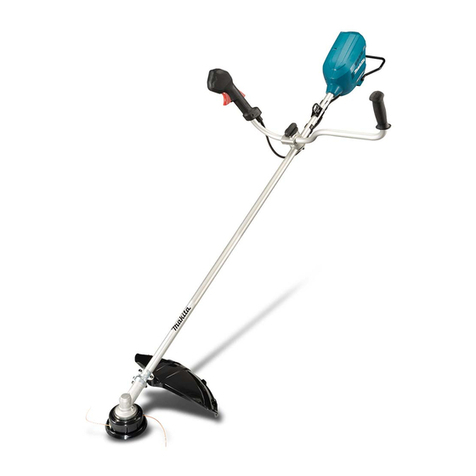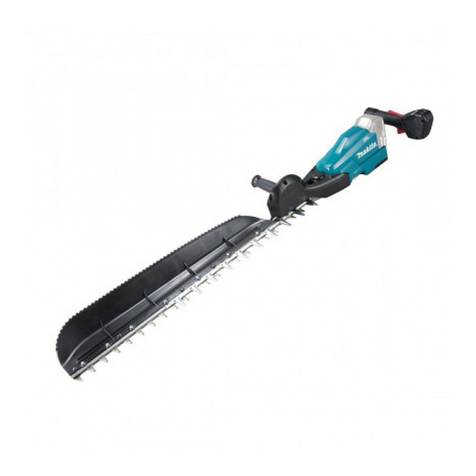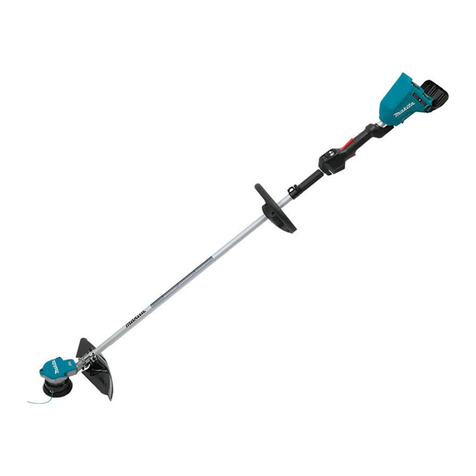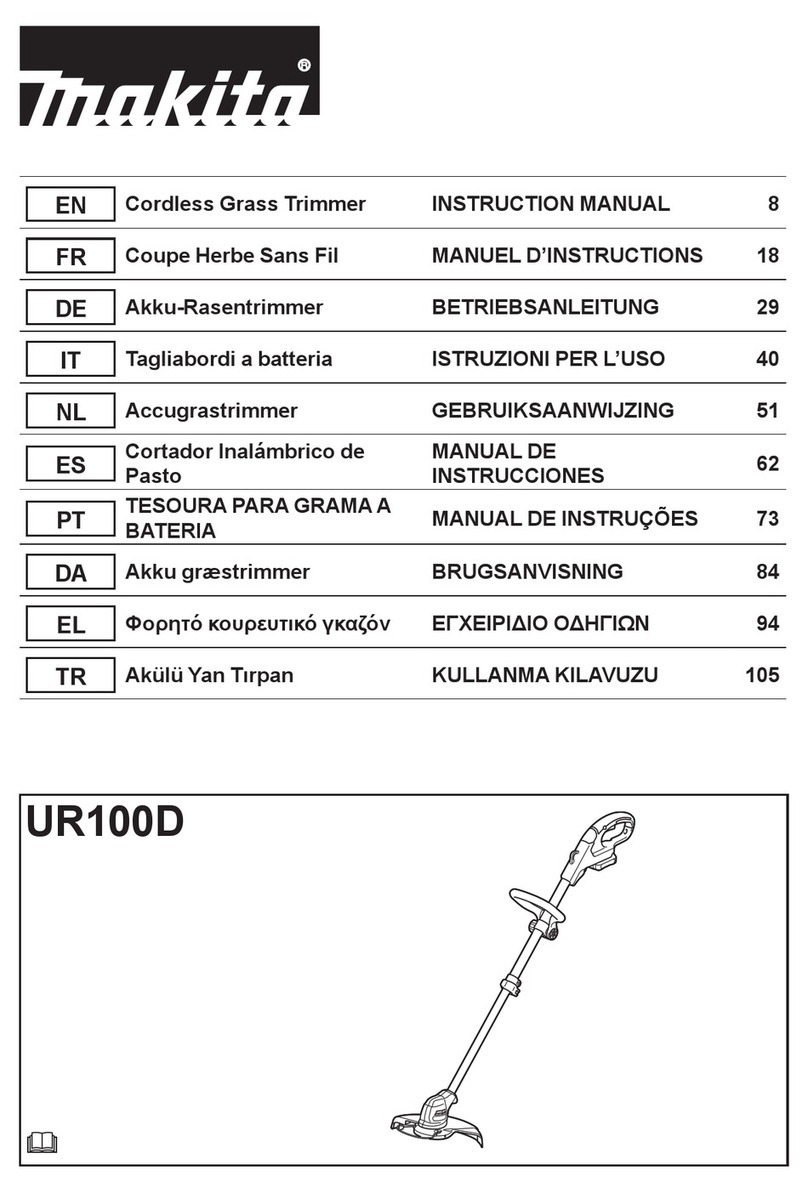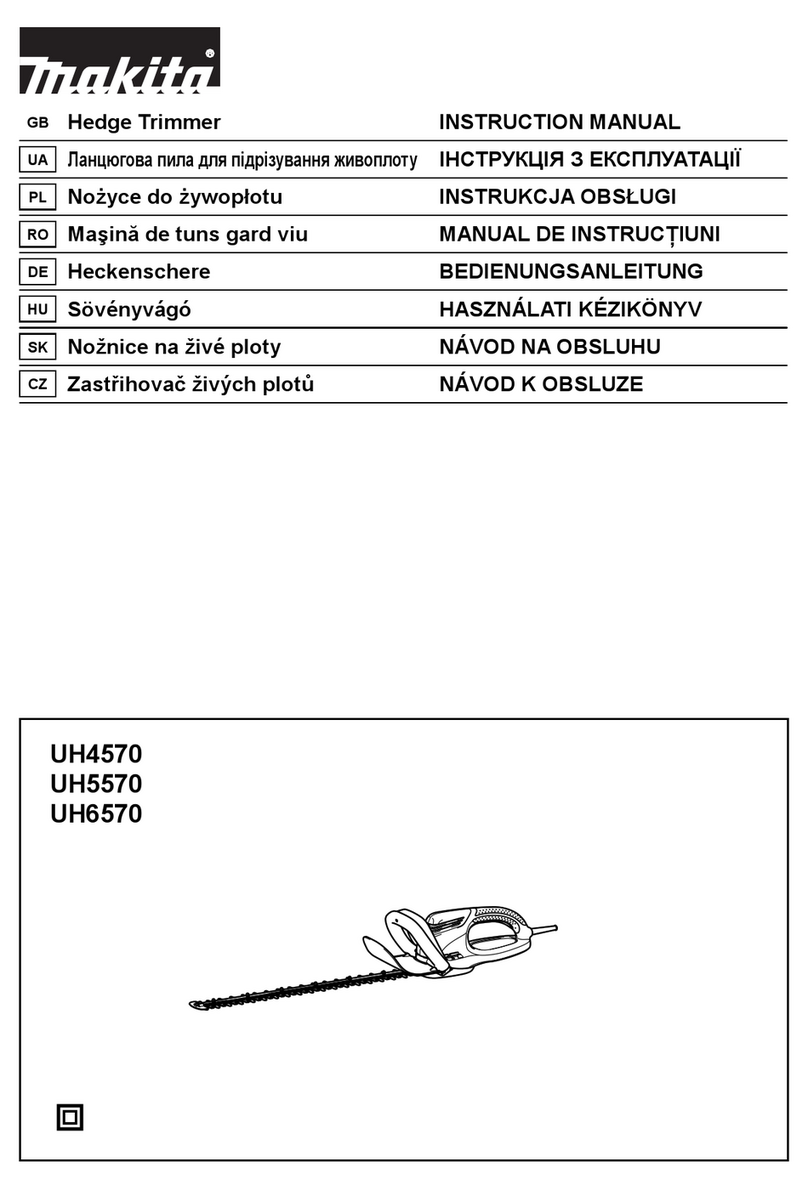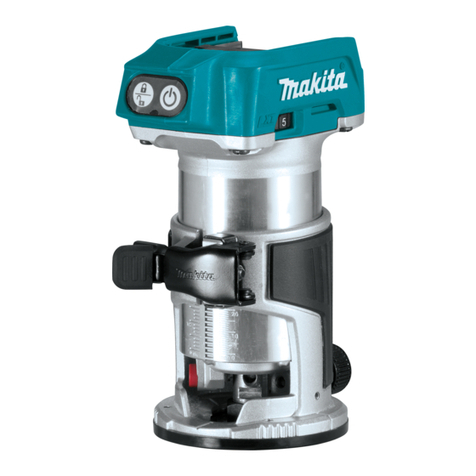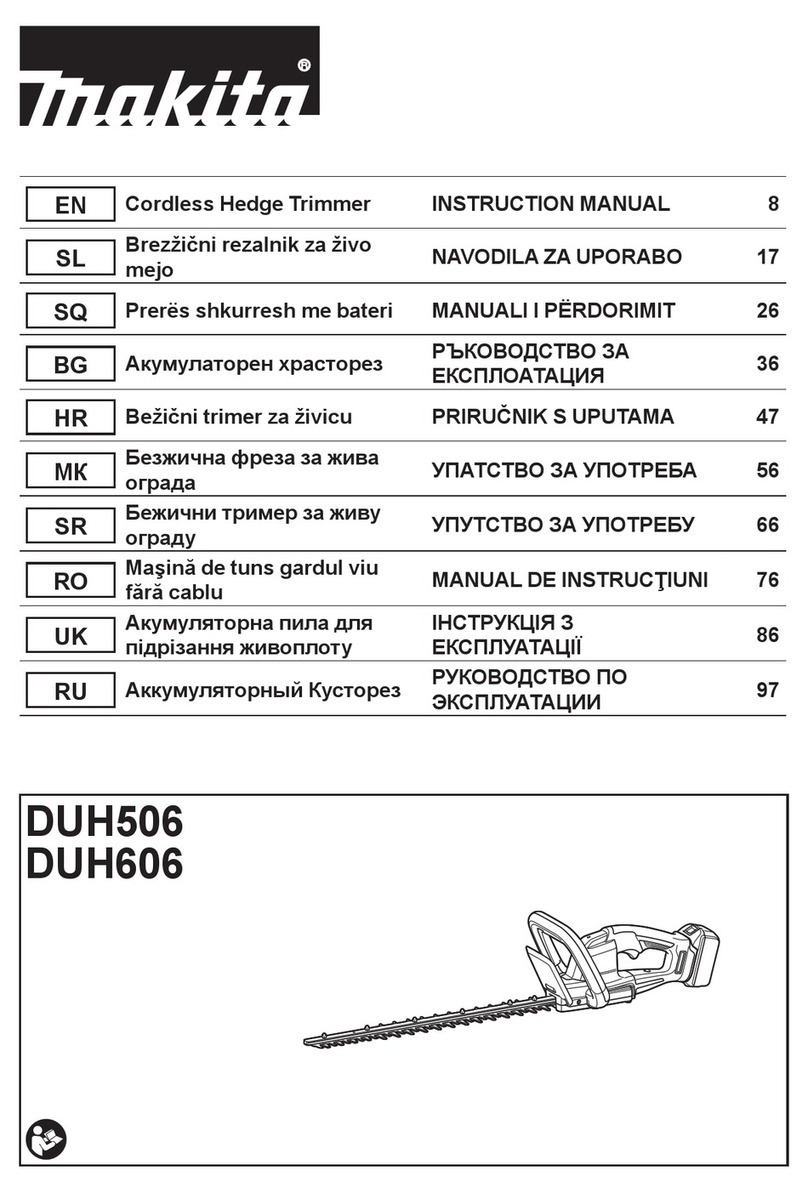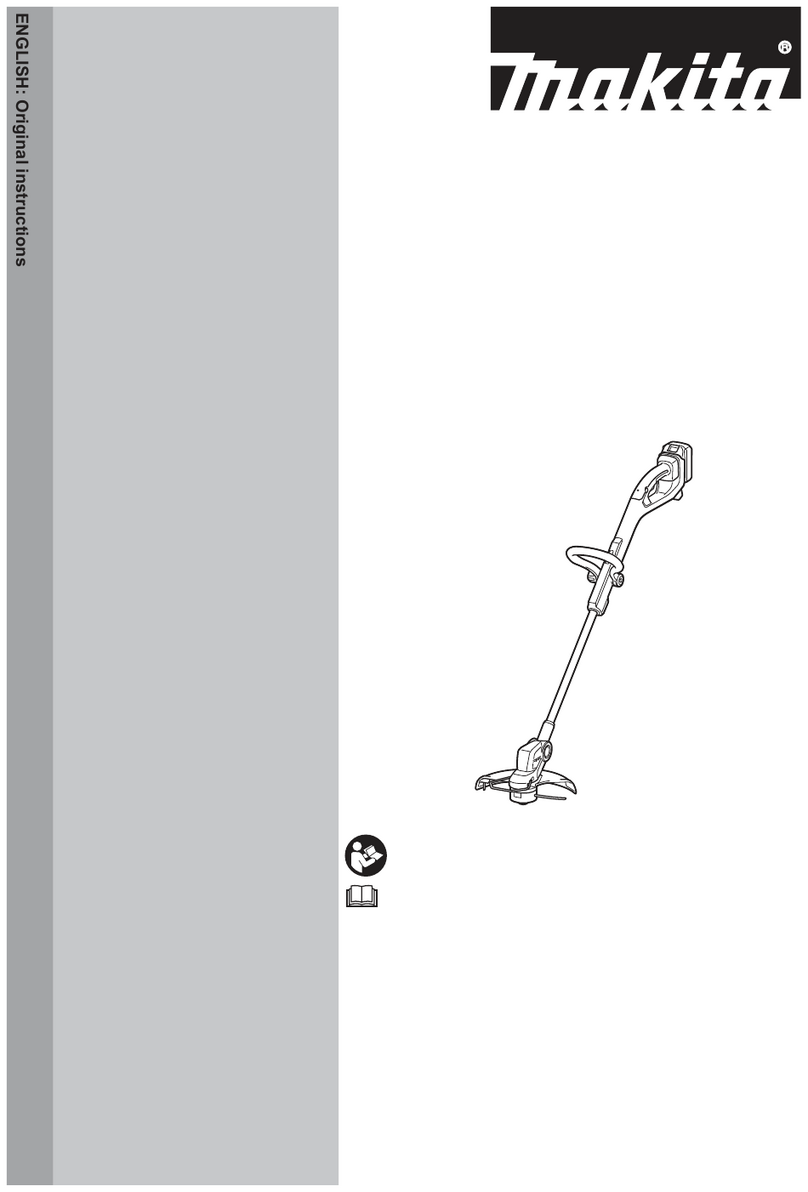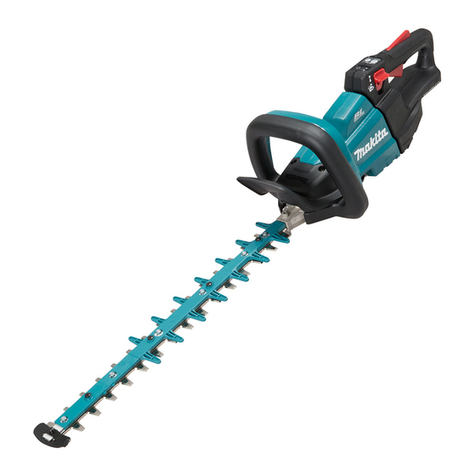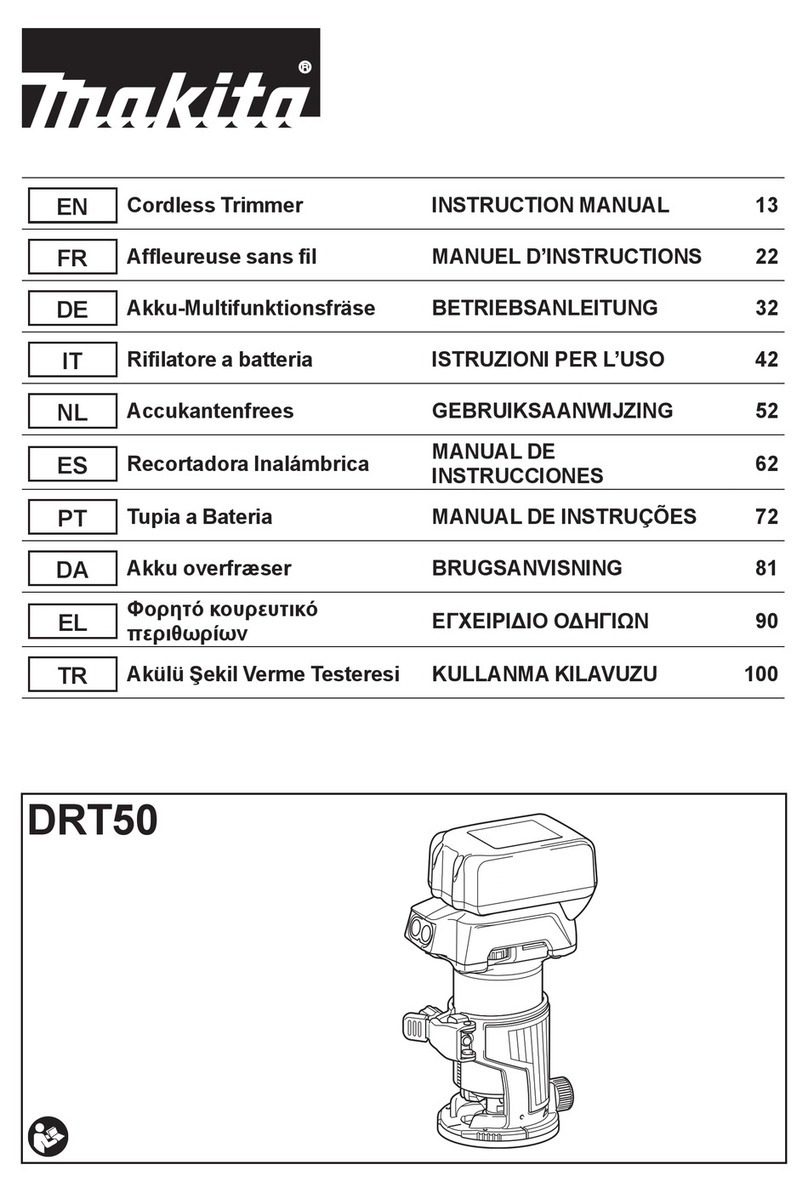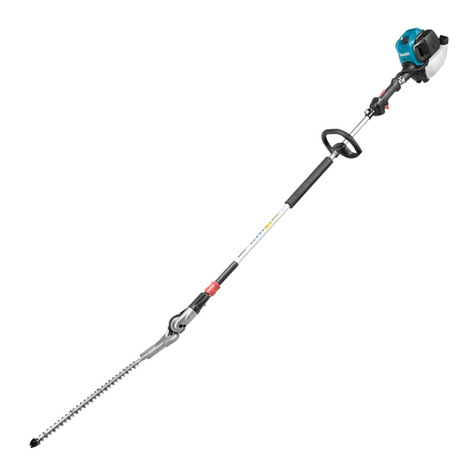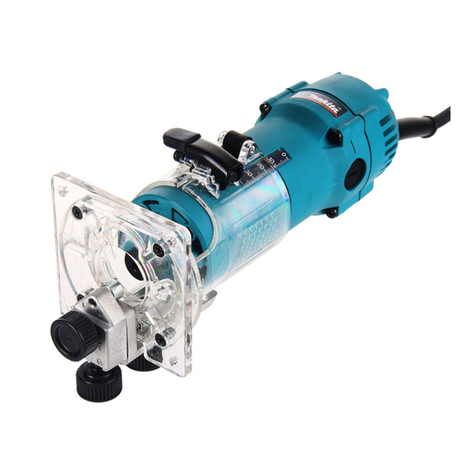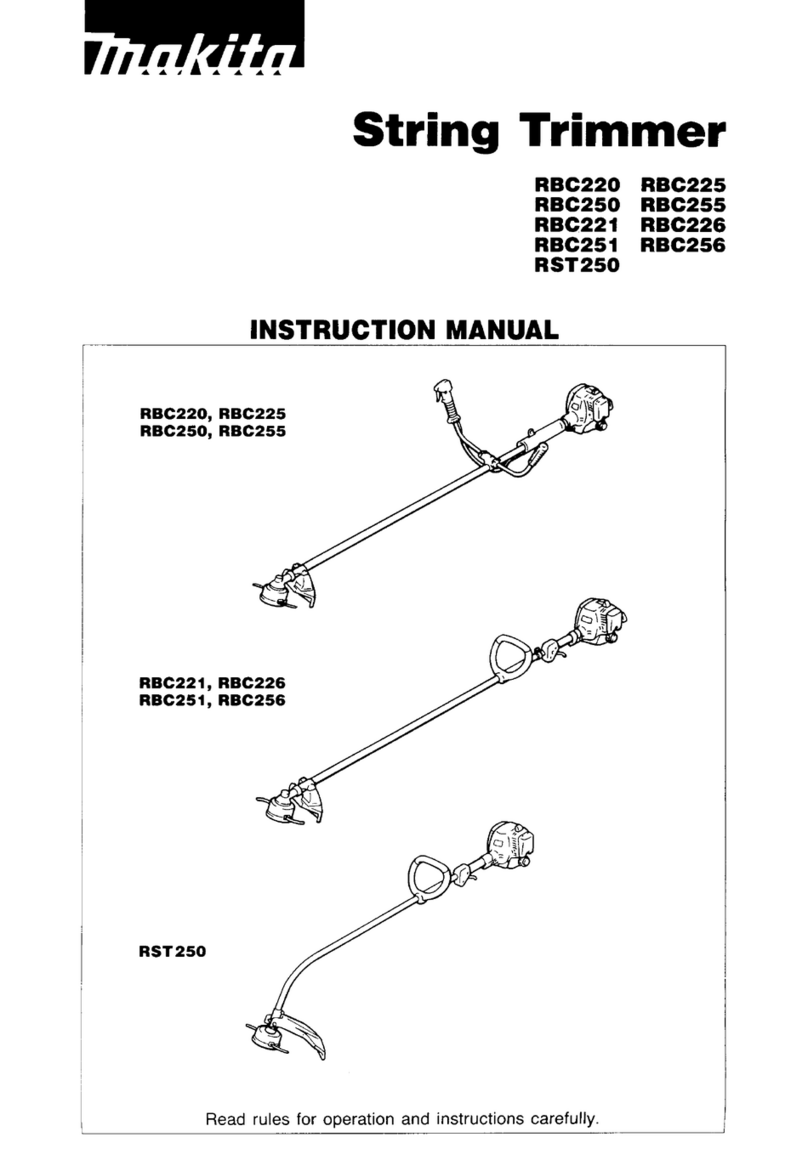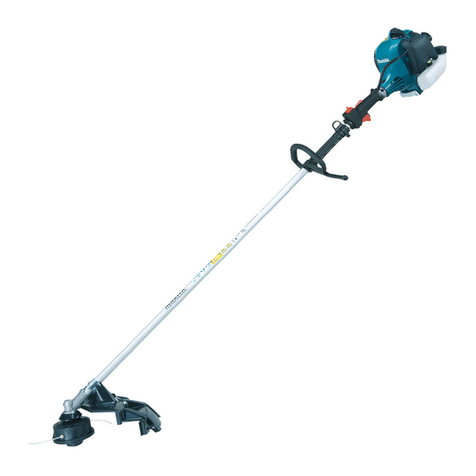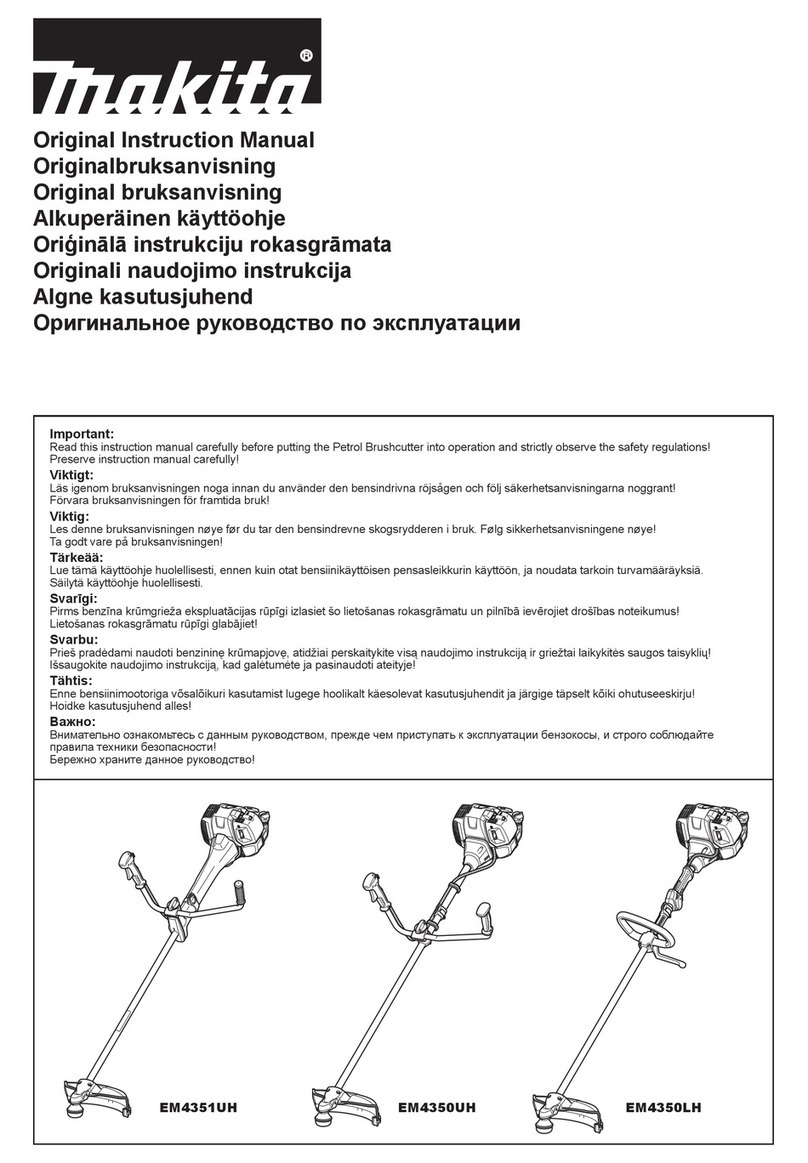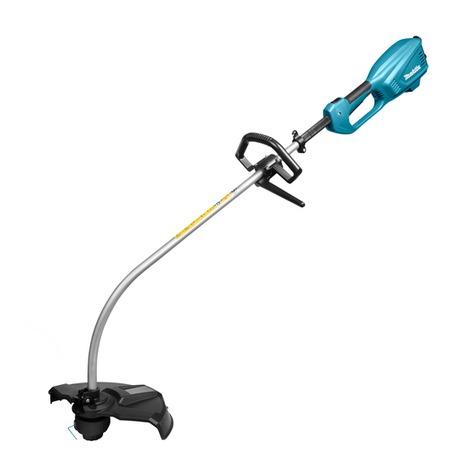
4ENGLISH
3. When battery pack is not in use, keep it away
from other metal objects, like paper clips,
coins, keys, nails, screws or other small metal
objects, that can make a connection from one
terminal to another. Shorting the battery termi-
nals together may cause burns or a re.
4. Under abusive conditions, liquid may be
ejected from the battery; avoid contact. If con-
tact accidentally occurs, ush with water. If
liquid contacts eyes, additionally seek medical
help. Liquid ejected from the battery may cause
irritation or burns.
5. Do not use a battery pack or tool that is dam-
aged or modied. Damaged or modied batteries
may exhibit unpredictable behaviour resulting in
re, explosion or risk of injury.
6. Do not expose a battery pack or tool to re or
excessive temperature. Exposure to re or tem-
perature above 130 °C may cause explosion.
7. Follow all charging instructions and do not
charge the battery pack or tool outside the
temperature range specied in the instruc-
tions. Charging improperly or at temperatures
outside the specied range may damage the
battery and increase the risk of re.
Service
1. Have your power tool serviced by a qualied
repair person using only identical replacement
parts. This will ensure that the safety of the power
tool is maintained.
2. Never service damaged battery packs. Service
of battery packs should only be performed by the
manufacturer or authorized service providers.
3. Follow instruction for lubricating and chang-
ing accessories.
4. Do not modify or attempt to repair the appli-
ance or the battery pack except as indicated in
the instructions for use and care.
Cordless grass trimmer safety
warnings
1.
Do not use the machine in bad weather condi-
tions, especially when there is a risk of lightning.
This decreases the risk of being struck by lightning.
2. Thoroughly inspect the area for wildlife where
the machine is to be used. Wildlife may be
injured by the machine during operation.
3. Thoroughly inspect the area where the
machine is to be used and remove all stones,
sticks, wires, bones, and other foreign objects.
Thrown objects can cause personal injury.
4. Before using the machine, always visually
inspect to see that the cutter or blade and the
cutter or blade assembly are not damaged.
Damaged parts increase the risk of injury.
5. Follow instructions for changing accessories.
Improperly tightened blade securing nuts or bolts
may either damage the blade or result in it becom-
ing detached.
6. Wear eye, ear, head and hand protection.
Adequate protective equipment will reduce per-
sonal injury by ying debris or accidental contact
with the cutting line or blade.
7. While operating the machine, always wear
non-slip and protective footwear. Do not oper-
ate the machine when barefoot or wearing
open sandals. This reduces the chance of injury
to the feet from contact with the moving cutters or
lines.
8. While operating the machine, always wear long
trousers. Exposed skin increases the likelihood of
injury from thrown objects.
9. Keep bystanders away while operating the
machine. Thrown debris can result in serious
personal injury.
10. Always use two hands when operating the
machine. Holding the machine with both hands
will avoid loss of control.
11. Hold the machine by the insulated gripping
surfaces only, because the cutting line or
blade may contact hidden wiring. Cutting line or
blades contacting a "live" wire may make exposed
metal parts of the machine "live" and could give
the operator an electric shock.
12. Always keep proper footing and operate the
machine only when standing on the ground.
Slippery or unstable surfaces may cause a loss of
balance or control of the machine.
13. Do not operate the machine on excessively
steep slopes. This reduces the risk of loss of
control, slipping and falling which may result in
personal injury.
14. When working on slopes, always be sure of
your footing, always work across the face
of slopes, never up or down and exercise
extreme caution when changing direction. This
reduces the risk of loss of control, slipping and
falling which may result in personal injury.
15. Keep all parts of the body away from the cut-
ter, line or blade when the machine is operat-
ing. Before you start the machine, make sure
the cutter, line or blade is not contacting any-
thing. A moment of inattention while operating the
machine may result in injury to yourself or others.
16. Do not operate the machine above waist
height. This helps prevent unintended cutter or
blade contact and enables better control of the
machine in unexpected situations.
17. When cutting brush or saplings that are under
tension, be alert for spring back. When the
tension in the wood bres is released, the brush or
sapling may strike the operator and/or throw the
machine out of control.
18. Use extreme caution when cutting brush and
saplings. The slender material may catch the
blade and be whipped toward you or pull you o
balance.
19. Maintain control of the machine and do not
touch cutters, lines or blades and other haz-
ardous moving parts while they are still in
motion. This reduces the risk of injury from mov-
ing parts.
20. Carry the machine with the machine switched
o and away from your body. Proper handling of
the machine will reduce the likelihood of acciden-
tal contact with a moving cutter, line or blade.
